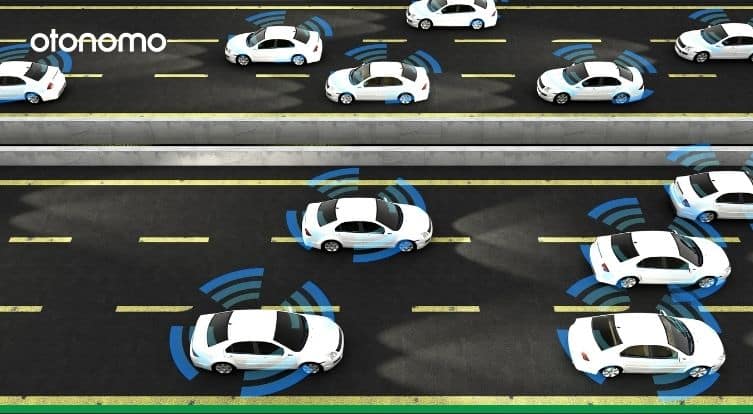The future of mobility is often described as one of two acronyms: “CASE” or “ACES,” referring to Connectivity, Autonomous Driving, Electrification, and Shared Mobility. Innovations in automotive connectivity, smart mobility, and the automotive IoT are geared toward both better experiences for the consumer and societal good. CASE technologies aim to lower CO2 emissions, enhance transportation efficiency in smart cities, increase road safety, and more. Since 2010, over $330B has been invested into mobility companies focused on these trends, and in 2020 alone investments in mobility startups exceeding $45B.
Each innovation in CASE will likely be interconnected: shared mobility platforms will likely utilize both EVs and AVs, and many autonomous vehicles will probably be electric. But, one thing is certain – each use case relies on automotive connectivity, and the future of mobility will be a connected one.
Connectivity, and the wealth of automotive data that it brings, is a key driver in CASE mobility use cases. Vehicle data powers the algorithms and infrastructure that enables the innovations in these trends. It makes us smarter about driver behavior, the realities of the road, and even the performance of vehicles.
Read on to explore each of the CASE technology trends, and how data from connected vehicles are contributing to their development.
| What is CASE? | |
| C – Connectivity | Vehicle connectivity powers V2X and is necessary to power many use cases |
| A -Autonomous | Autonomous vehicles rely on vast data and vehicle connectivity |
| S -Shared Mobility | Data from connected cars aids fleet logistics, navigation, and more |
| E – Electrification | Data from connected cars is essential in building the ecosystem for EVs |
Connectivity
Connected vehicles are becoming ubiquitous, with a recent report from EPM and SBD Automotive forecasting that 96% of new vehicles shipped globally in 2030 will have built-in connectivity. Connected vehicles communicate several data attributes from multiple sensors, providing rich data about vehicles and their surroundings.
Data from connected cars can be transmitted through embedded modems or SIMs to power automotive IoT. Vehicle to Everything (V2X) technologies enable vehicles to communicate data directly with other vehicles (V2V), infrastructure (V2I), pedestrians (V2P), and networks (V2N). This data can quickly be processed to provide quicker response times for better traffic management and road safety. Automotive data can also be sent to the cloud and utilized by smart cities to power their intelligent transportation systems, or by countless use cases that improve the customer experience.
Automotive data from connected vehicles enables understanding of traffic patterns, driver behavior, and more. Connectivity, as well as the insights derived from connected car data, is essential in powering other CASE technologies, explained below.
Autonomous Driving
Autonomous vehicles (AVs) promise to revolutionize the way we travel – enhancing road safety and efficiency by reducing or eliminating human error. The potential market for AV is huge – with McKinsey estimating that global revenues for AVs in urban areas could reach $1.6 trillion a year in 2030, with a benefit to the public of over $800B a year.
Public benefits would include redevelopment of unnecessary parking spaces, more productive commutes, reduced CO2 emissions caused by decreased idling, and fewer accidents due to safer roadways.
Autonomous vehicles will be by definition connected. They produce vast amounts of data, as well as rely on data and connectivity from other vehicles.
- V2X connectivity: AVs will rely heavily on V2X to sense and anticipate road conditions or hazards. AVs will receive data sent from infrastructure, other vehicles, and even pedestrians. Data from external sources, including other vehicles, can help AVs “see” farther than the range of their own sensors, and enables improved accuracy in inclement weather conditions in which the vehicle’s sensors may be compromised. V2I will be essential in communicating vital information, such as whether a traffic light has turned from red to green, or whether a dynamic sign has altered the speed limit. Thus, V2X connectivity is essential in helping the vehicle make critical decisions.
- Development and benchmarking: Data from both traditional and automated connected cars on the road will serve to develop and improve autonomous vehicles. This data will present insights on driver behavior, traffic trends, vehicle specifics, as well as other vital information to power machine learning algorithms and AI.
- Data production and connectivity: AVs are expected to produce up to 19 terabytes of automotive data every hour. This data will be produced from multiple sensors, such as radar, LIDAR, cameras, ultrasonic sensors, and more. It will need to be transmitted in real time to other objects in the V2X ecosystem. The data will also require processing and analysis by some combination of edge computing and cloud computing, and will need to be sent to centralized data hubs.
Shared Mobility
Shared mobility has made a splash in recent years with the rise of companies like Uber and Lyft. Urban consumers already use solutions like ride sharing, car sharing, and e-hailing, and with the rise of AV, it is anticipated that robo-taxis will be another shared mobility use case. The shared mobility market was estimated to be a staggering $99B market in 2019, and is expected to reach $238B by 2026. The boom in shared mobility could mean there are fewer private cars on the road, impacting carbon emissions and congestion. The trend is also expected to transform urban real estate development by decreasing the need for parking.
Shared mobility is part of a vast ecosystem powered by automotive connectivity.
- Fleet connectivity: With trends toward subscription leasing models and eventually autonomous taxis, fleets will rely on connectivity to monitor and track their vehicles. Fleets dealing with shared mobility will benefit from automotive data through fuel tracking, maintenance optimization, route planning, and more.
- Routing and navigation: Players across the shared mobility spectrum benefit from improvements that automotive data provide in routing and navigation. Rich, real-time traffic data from connected vehicles enables improved insights into traffic conditions, hazards, driver behavior, and more. This data can help organizations find the most efficient and safest routes for vehicles to pick up riders.
- Innovative insurance: Car shares and subscription services will benefit from user-based insurance, allowing consumers the freedom to choose “pay to play” vehicle insurance during the duration of their drive. Insurance providers will use automotive connectivity to seamlessly track usage and assess safety concerns.
Electrification
Electrification is becoming a fact of life, with more cities and countries planning to go all-electric in the next few years. Electric vehicles are expected to make up 32% of total market share by 2030. The environmental impact from the EV revolution is expected to be significant, as it will lower CO2 emissions and reduce dependency on fossil fuels. Furthermore, many autonomous vehicles and shared mobility solutions are expected to be electric, multiplying the environmental benefits of electrification.
Automotive data from connected vehicles will be vital to enabling the ecosystem around electric vehicles.
- Charging infrastructure planning: Data from connected electric vehicles will be essential in assessing the demand for charging stations. Location Intelligence from historical traffic data will aid in planning new charging station locations based on where EV drivers are located, where they tend to travel, and on which routes their batteries start to drain.
- Simplified trip planning: Data from connected EVs can power services that improve the customer experience and ease range anxiety. Information about vehicles’ location and state of charge can be used by apps to send alerts to drivers, direct them to the nearest charging station, and help plan the most efficient routes. AI enabled solutions can use automotive data to assess a vehicles’ remaining range, taking into account weather and road conditions, so as to send alerts and route recommendations.
- Policy updates: Currently, roads are typically funded through fuel taxes. The influx of EVs is expected to reduce the tax income used to repair infrastructure. More countries and municipalities are considering shifting their tax model to one based on vehicle miles traveled (VMT), as determined by vehicle data. This will provide an accurate, real-time analysis of the road usage of both EVs and ICE vehicles.
As the mobility industry is changing, automotive connectivity is becoming increasingly important to power new technologies and define the future of mobility. Each CASE technology will be entwined with the others to some extent, but none more than connectivity.
To learn more about data attributes available from Otonomo, speak with one of our data experts.







